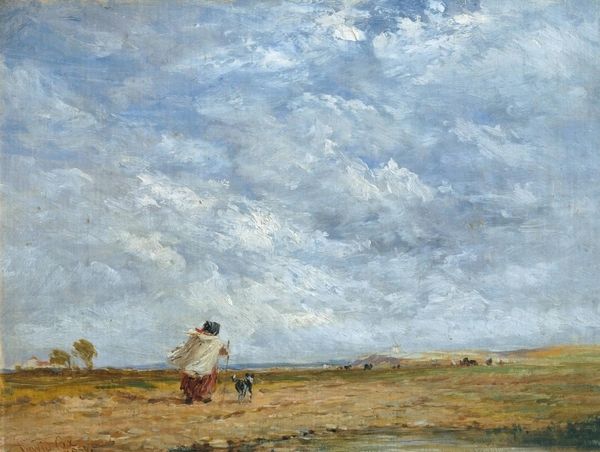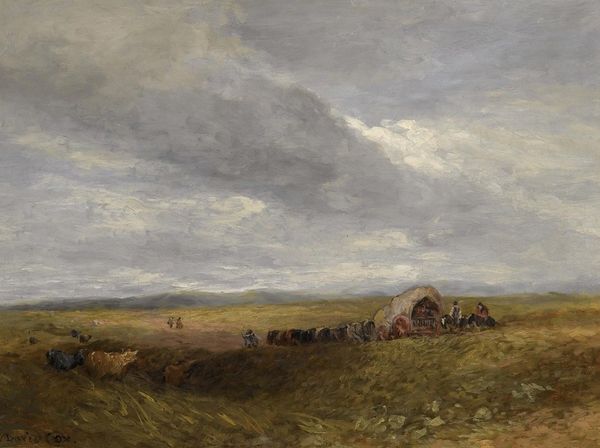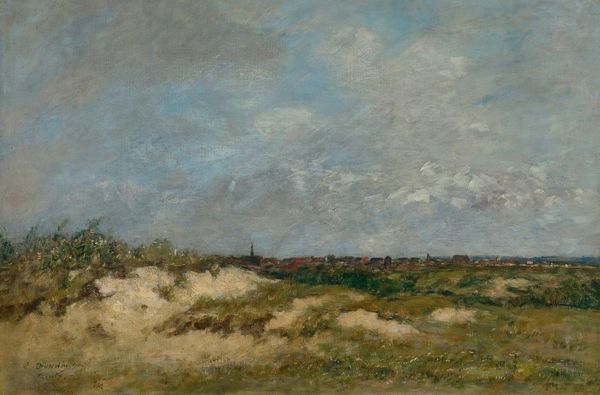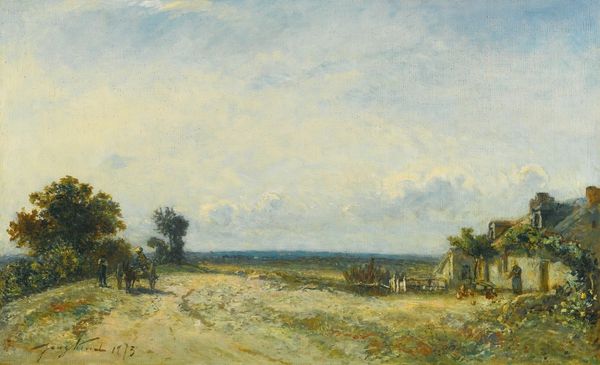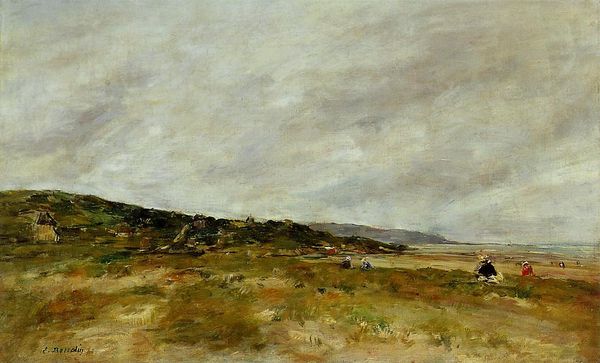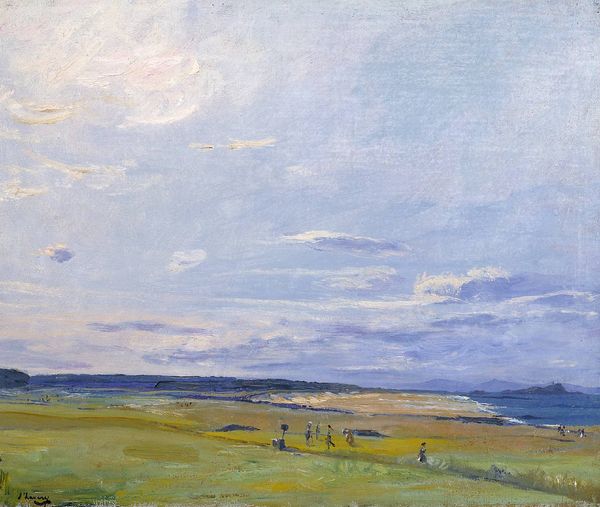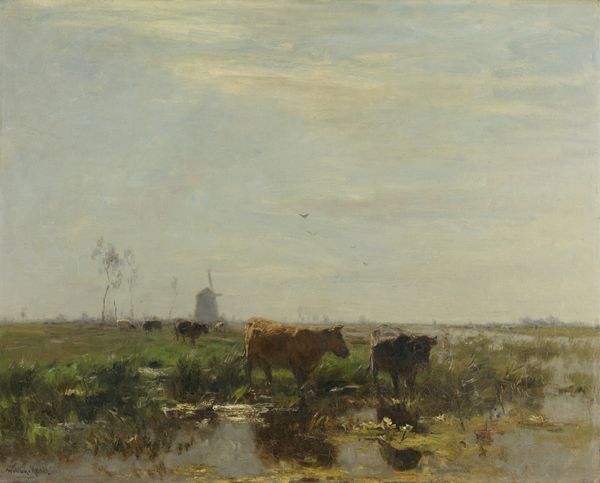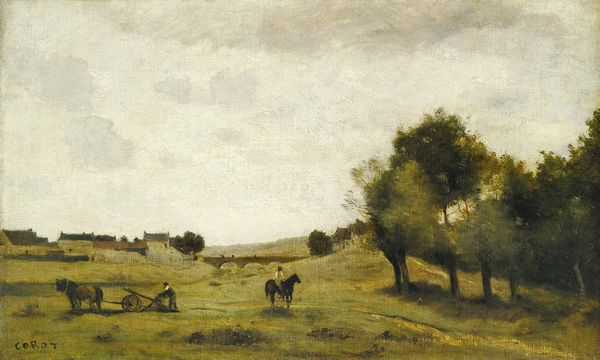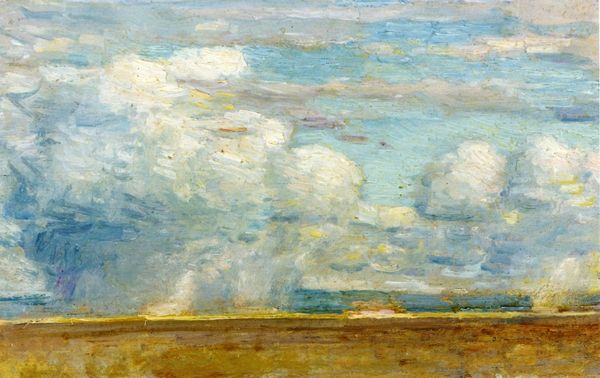
Copyright: Public domain
Editor: This is David Cox’s “Rhyl Sands,” painted in 1836. It's an oil painting depicting a beach scene with indistinct figures under a vast sky. I’m immediately struck by how much space the sky occupies – it almost seems to dwarf the figures below. What do you see in this piece? Curator: The vast sky certainly dominates, doesn’t it? Think of it as a mirror to the human psyche, that constant search for meaning. Cox gives us a romantic vision. Notice how he uses broad strokes and diffused light? What do those choices communicate to you? Editor: A kind of... impermanence, maybe? Like the scene is fleeting, almost dreamlike. Is there a connection to Rhyl itself? Curator: Rhyl was an emerging seaside resort in the 1830s. Beaches held complex meanings. Leisure, certainly. Escape. But consider the Pre-Raphaelites or Romantics— they explored beaches as symbols for emotional intensity and awe. Editor: So the beachgoers themselves are part of the symbolic language? They're not just there to populate the scene. Curator: Precisely. Cox’s figures, while indistinct, represent humanity against the backdrop of nature's grandeur. They’re archetypes, really – figures embodying humanity, experiencing their emotions. Are they joyful or reflective or contemplative? Editor: I suppose it’s ambiguous. The painting feels balanced. The figures don’t take away from the grandeur of nature, and vice versa. Curator: An important observation. This delicate equilibrium – how is it maintained over time? By connecting with our own emotions. By seeing a visual echo of them here, in sand and sky. Editor: I didn’t expect a beach scene to hold so much meaning. Now, when I see artwork from this time, I’ll try to decode the relationship between people and landscapes! Curator: Wonderful. Each work offers a world of symbols, awaiting your interpretation.
Comments
No comments
Be the first to comment and join the conversation on the ultimate creative platform.
